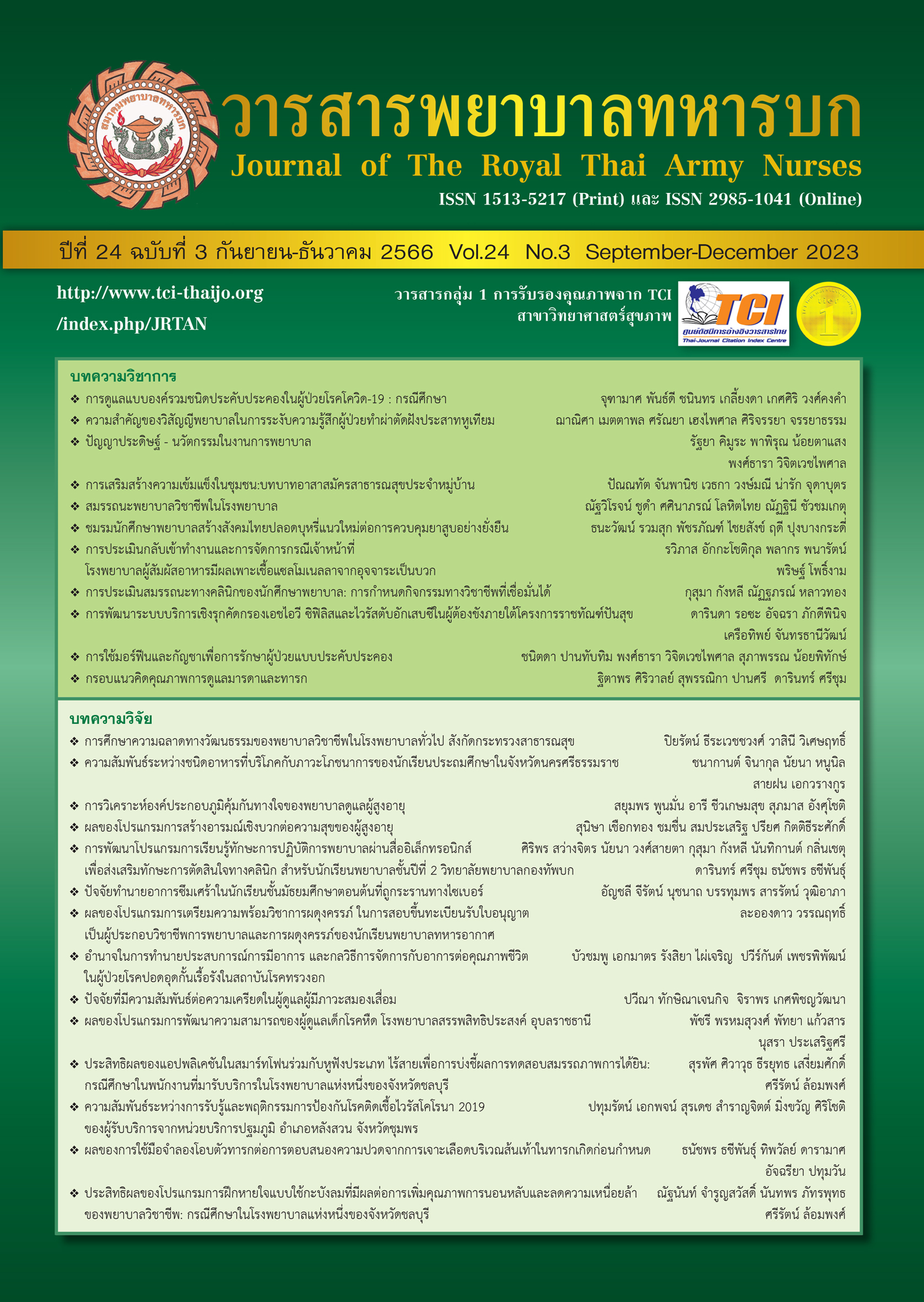The Relationship between Perceptions and Preventive Behaviors of Coronavirus Disease 2019 among Service Recipients from Primary care Units, Lang Suan, Chumphon Province
Keywords:
Health Belief Model, Preventive Behaviors of Coronavirus Disease 2019, Primary Care UnitAbstract
This research aimed to study the relationship between perceptions and preventive behaviors of Coronavirus disease 2019 among service recipients from primary care units, Lang Suan, Chumphon. It is a descriptive study. The samples consisted of 382 service recipients from primary care units, Lang Suan, Chumphon Province. The instrument was an online questionnaire in Google Forms. The data was analyzed by frequency, percentage, mean, SD, and Pearson’s product moment correlation coefficient for testing the relationship.
The results revealed that the relationship between perceptions and preventive behaviors of Coronavirus disease 2019 was positive and at a low level, with the significance level of 0.01 (r = 0.354**).
Thus, the results should be applied as a guideline to transfer knowledge and health education for general people, and to create the body of knowledge, health literacy, self-care behavior, and how to take care of their families as well as communities. Also, it is to set clear and concrete disease preventive policies.
Downloads
References
Department of Disease Control. Guideline for the prevention of Coronavirus disease 2019 or COVID-19 for the general public and risk groups. (Nonthaburi): Ministry of Public Health; 2021. (in Thai)
Department of Disease Control. COVID-19 (EOC-DDC Thailand). (Nonthaburi): Ministry of PublicHealth; 2021. (in Thai)
Kaewsuksi R, Kongkun P, Tongkup B, Samaae L, Bunnarakorn S. Relationships Between Knowledge, Perception, and the “New Normal Behaviors” for Preventing Coronavirus Disease (COVID-19) Infection among People in Narathiwat Province. The Southern College Network Journal of Nursing and Public Health. 2021; 8(3): 67-79. (in Thai)
Summart U, Rungsuksud P, Sukontawat W. Factors Associated with Self-Protective Behavior of COVID-19 in Undergraduate Students in the Northeastern Region. Journal of The Royal Thai Army Nurses. 2022; 23(3): 70-9. (in Thai)
Trairatnopas V, Aree P, Phimchaisai P. The Benefits and Barriers, and Health Behaviors toward Preventing the Spread of Coronavirus in Elderly. Journal of The Royal Thai Army Nurses. 2021; 22(3): 105-112. (in Thai)
Phetphum C. Health behavior: Concept Theory and Application. 3rd ed. Phitsanulok: NaresuanUniversity; 2017. (in Thai)
Janz, N.K., & Bechker, M.H. The health belief model: A decade later. Health education quarterly. 1984; (11): 1-47; Doi: 10.1177/ 109019818401100101.
Krejcie, R.V. and Morgan D.W. DeterminingSample Size for Research Activities.Psychological measurement. 1970; 3(1): 607-10.
Wongthi S. Factors Affecting Prevention Behavior for Coronavirus 2019 Among Health Volunteers, Sukhothai Province. [dissertation]. Phitsanulok: Naresuan University; 2020. (in Thai)
Downloads
Published
How to Cite
Issue
Section
License
Copyright (c) 2023 Journal of The Royal Thai Army Nurses

This work is licensed under a Creative Commons Attribution-NonCommercial-NoDerivatives 4.0 International License.
บทความหรือข้อคิดเห็นใดใดที่ปรากฏในวารสารพยาบาลทหารบกเป็นวรรณกรรมของผู้เขียน ซึ่งบรรณาธิการหรือสมาคมพยาบาลทหารบก ไม่จำเป็นต้องเห็นด้วย
บทความที่ได้รับการตีพิมพ์เป็นลิขสิทธิ์ของวารสารพยาบาลทหารบก
The ideas and opinions expressed in the Journal of The Royal Thai Army Nurses are those of the authors and not necessarily those
of the editor or Royal Thai Army Nurses Association.






